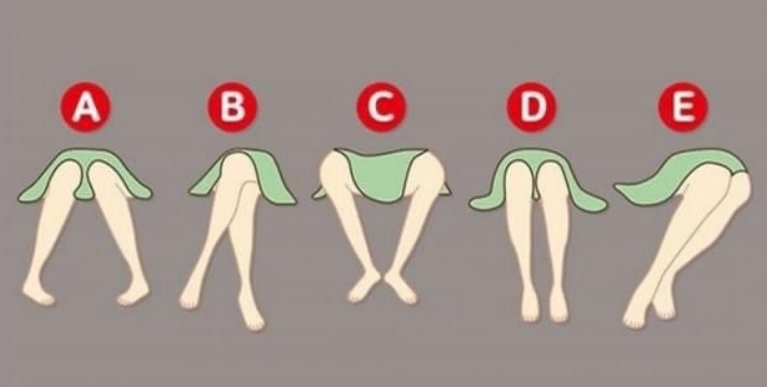The way someone positions themselves while sitting can offer unique insights into their personality, shedding light on their goals and concealed aspects. Experts emphasize that the arrangement of the legs during sitting is particularly revealing.
Observe the seating postures of those around you, as it can provide valuable clues about their character and inner workings.
The “A” position, where an individual sits with an avoidance posture, signifies a tendency to sidestep challenges rather than confront them directly. Instead of addressing problems head-on, they may choose to ignore or attribute them to others.
While this avoidance strategy may lead to missed opportunities and wasted time, individuals in this category often exude a pleasant, creative, and childlike charm. Despite occasional impulsive remarks, they possess a magnetic quality that draws people in.
Another revealing posture is the “B” position, where one leg is crossed over the other while sitting. Individuals adopting this stance tend to be highly private, guarding their inner lives and harboring secrets. Although they may be reserved in social settings, they often possess wisdom and knowledge, making them intriguing personalities.
Those described in the preceding section are often imaginative dreamers with a penchant for creativity. Their innovative ideas are highly valued in professional settings, and their disdain for monotony propels them to seek new experiences and form meaningful connections.
Contrastingly, individuals in the comfort-seeking “C” position prioritize comfort above all else. They derive satisfaction from achieving perfection in their possessions and experiences, sometimes bordering on obsession. However, their meticulousness may be offset by disorganization, and they might struggle to maintain focus in chaotic environments.
While these distinct postures contribute unique strengths and challenges, acknowledging biases and working to mitigate limitations can foster a more productive and fulfilling environment.
Delving further into seating postures, individuals who prefer an upright position and abhor tardiness are often astute and reserved. They prioritize their peace of mind and are cautious about expressing too many emotions, viewing public displays of intimacy as inappropriate.
Conversely, those who plant their feet firmly on the ground tend to be more open and expressive of their emotions. Although they may come across as blunt at times, they are unafraid to convey their feelings.
Individuals who keep their feet crossed or folded under their chairs may find socializing challenging, treating it as a competitive arena where they need to be wary of rivals. Seeking solace in the comfort of their homes, they may struggle with criticism, perceiving it as a personal affront.
Those in the “E” position display patience and tenacity, placing value on their appearance and making efforts to look their best. Their unhurried approach is rooted in the belief that everything will work out in due time. However, this might be a reflection of underlying insecurities, as they find it difficult to handle criticism personally.
In essence, the nuances of sitting positions unveil a wealth of information about an individual’s nature, encompassing vulnerability, confidence, and emotional expression.
